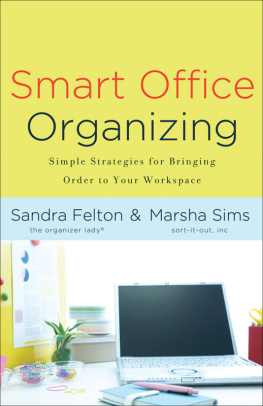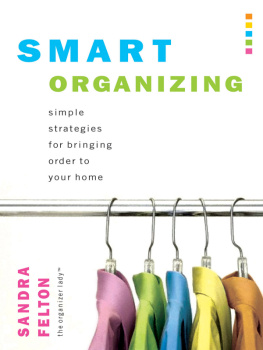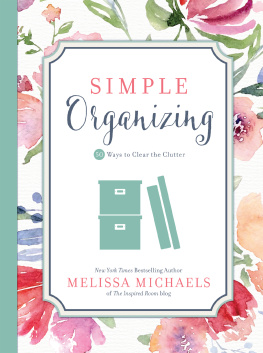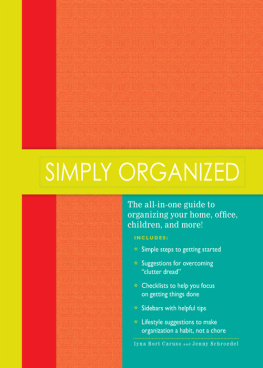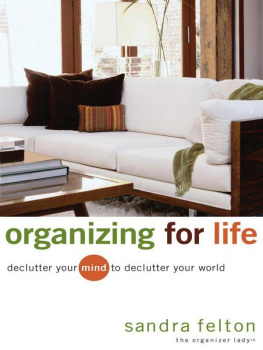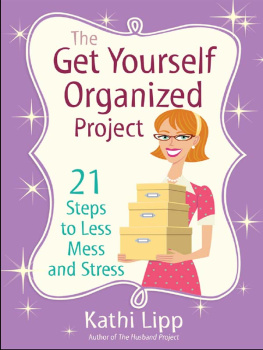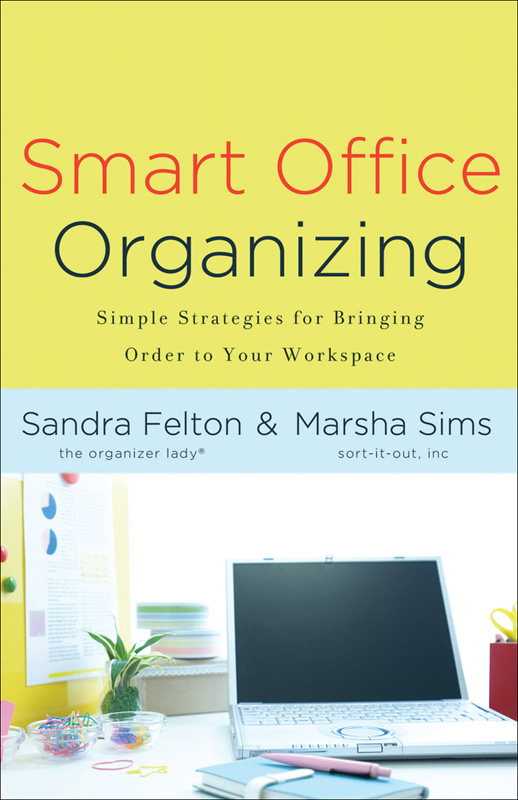

2011 by Sandra Felton and Marsha Sims
Published by Revell
a division of Baker Publishing Group
P.O. Box 6287, Grand Rapids, MI 49516-6287
www.revellbooks.com
Ebook edition created 2011
All rights reserved. No part of this publication may be reproduced, stored in a retrieval system, or transmitted in any form or by any meansfor example, electronic, photocopy, recordingwithout the prior written permission of the publisher. The only exception is brief quotations in printed reviews.
ISBN 978-1-4412-3405-6
Library of Congress Cataloging-in-Publication Data is on file at the Library of Congress, Washington, DC.
Unless otherwise indicated, Scripture is taken from the New American Standard Bible, copyright 1960, 1962, 1963, 1968, 1971, 1972, 1973, 1975, 1977, 1995 by The Lockman Foundation. Used by permission.
To protect the privacy of those who have shared their stories with the authors, some details and names have been changed.
Any internet addresses, email addresses, and phone numbers in this book are accurate at the time of publication. They are provided only as a resource; Baker Publishing Group does not endorse them or vouch for their content or permanence.
This book is dedicated to all of the wonderful disorganized people who have allowed us, hopefully and fearfully, into the hallowed ground of their offices and homes. Over the last twenty-plus years, they have allowed us to touch their things, especially their papers, and have trusted us to make their confusion better.
This book is further dedicated to those people who, by reading our other books on the topic of organizing, have allowed us into the hallowed ground of their thinking. We have respectfully challenged the thoughts and feelings that have led them into chaos with their papers and belongings. Hopefully they have come out the other side of that challenge better able to face the fearsome task of making positive changes to very basic parts of their lives.
In short, this book is dedicated to the amazing people who, like us, struggle to bring order and sanity into their lives, especially in the area of that powerhouse place of lifes businessthe office.
Contents
Acknowledgments
Whoop-de-do! and Yahoo! to Nanette Holt, editor extraordinaire, who dared to dive into the depths of our writing and drag us, gasping and struggling, safely to the shores of writing sanity. This is our dramatic way of saying, Thanks, Nanette, for all you did to set us in the right direction and keep us going there!
A special thanks to all the good, hardworking folks at Revell, especially Lonnie Hull DuPont, for the confidence you place in us each time you say yes to a proposal for a new book on organizing. Together we have covered many aspects of this dynamic subject, and helped many of those who seek to bring order into their lives. It has been a great team effort.
Introduction
This book is not written for the executive who sits in a pristine space with a glass top desk and an assistant hovering about to keep the ragged ends of commerce neatly tucked. Nor is it for those who work in their own nicely controlled home offices, efficiently turning out projects with a minimum of effort. It is not even for the secretary at her desk behind the scenes, doing the same activity over and over and successfully producing a large body of work because her path is well-worn and carefully followed. All of these workers have a system already set up and have found a way to work it.
This book is written for the rest of us, those whose lives are made up of a wide variety of activities that we happily pursue in that space weve dedicated to our work and call... our office. For the most part, our personalities are outgoing, spontaneous, and upbeat. We are not known for our efficiency. But despite our easy-going approach to life, were surprisingly capable in completing assignments and following through on projects.
To keep up with our many activities and do them well, we increasingly need to come to grips with what is happening in our workspace. Managing the details of office work is not our strong suit. In order to compensate for this natural lack, we buy books on office organizing and hope that more instruction will lift the burden of confusion that tends to creep in as we work. We hope these books will free us to work with less effort in our own flexible style.
But sometimes we need more than another how-to. Sometimes we need to know whywhy we struggle to hold things together in an organized way, when others seem to accomplish it with ease, quite naturally and with great success.
So before we give you our how-tos that will help you conquer disorganization for good, were going to give you the whysso the positive changes you make will last.
Why Office Organizing Books Dont Work... and the Paper Challenge
The offices basic job is to handle information coming by phone, fax, email, computer, and... paper. Ah, yes. Paper.
Paper is where the jam-up comes. Getting it, using it, and if necessary, storing it. The office is basically the throne room of King Paper. And at some point in the process, while we think paper is serving us , if we are not careful we end up serving it !
The question is: How can we be restored to our rightful position as rulers of our space, time, activities, and paper management? Thats what this book is all about.
Books on office organizing tend to be dry and dustyabout as fun to read as the owners manual for your copier. Nonetheless, people suffer through reading them.
We used to do it too. Like you, we were desperate for help in setting up our offices to handle the wonderful work we envisioned we would produce there. We gratefully read, looking for help from those who knew enough to give guidance and cared enough to share it.
And we suffered througheventually learning how to make our offices work for us, and mastering those skills well enough to share them with others. Many thousands of others.
Through that, we also learned that books on office organizing dont have to be dull. They can be vibrantand should bebecause organizing your office is an exciting part of your plan to upgrade and organize your life and business.
Research shows that people learn by observing the actions of others. In our approach, you will be stimulated by true stories of real people. Each story takes you into a world very much like your own. As you engage with their experiences, youll begin to see how you can move your office into the condition you wantbut didnt believe you could achieve.
All of us tend to mirror what we observe, whether its actually seen or just imagined as we read. As you read this book, youll see Brad gaining control of his office by drawing an organizing schematic in chapter 5. Youll cheer for Erin as she develops an office that looks as professional as she is in chapter 7. In chapter 13, youll see the secrets to Phylliss and Juans success in creating space for a nicely set up mini office at home. And youll admire Eileens perseverance in chapters 6 and 10 as she tackles the overwhelming clutter in her home office and finally develops a filing system that really works.
As you experience their solutions, pathways of order in your own mind will begin to develop. Rightly applied, those paths can lead you to the kind of environment where you want to work. In short, you will have power to create the office you want and needand maintain it. An office that looks good and really workscan it get better than that?

